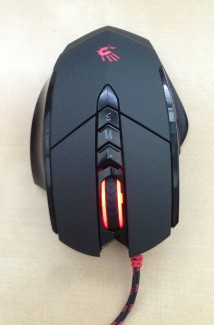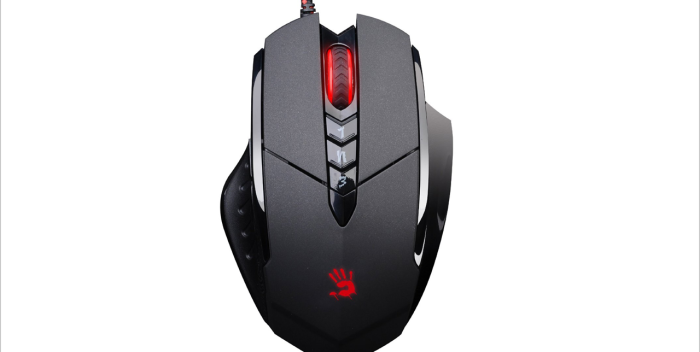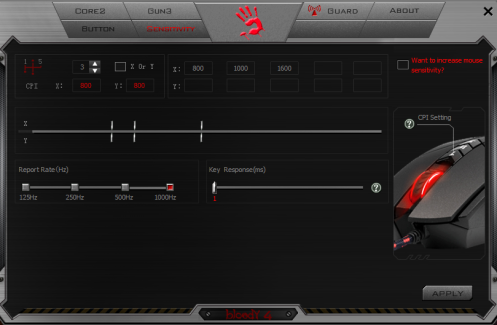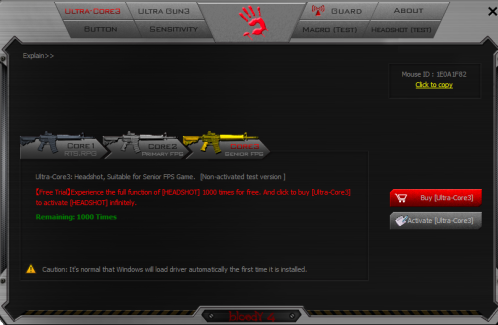Bloody Multi-Core Gun3 V7 review: Surprising price point, less surprising results
About 6 months ago I purchased my Zowie AM, but I had a really hard time choosing among the all of the mice out there – companies like SteelSeries, Logitech and Razer have been around for a very long time and boast a plethora of peripherals for different audiences. The up-and-coming Bloody Multi-Core Gun3 V7 (V7 from here on) surprised me. It was at the least $20 less than any mouse I have ever purchased for gaming, and it seemed to be just as full-featured as the rest.
Most performance gaming mice tend to run somewhere from $60 onward, so I was originally skeptical of how a $40 piece would keep up with the other products in this very competitive market.
Hardware
To test out the V7 I primarily played Battlefield 3, Counter-Strike: GO and even some League of Legends. The build quality feels like something you’d expect out of most performance mice. During my time with the mouse I was using my SteelSeries QcK+, a particularly thin mouse pad.
Unfortunately, I felt like no matter how much I used the V7 I just couldn’t get conform to its shape. There seems to be an inherent clunkiness to it which causes my hands to feel like they aren’t in the right position. The mouse is designed around the right hand yet there is something uncomfortable about the way said hand would sit. I have a “claw” grip and slightly smaller than average hands, so this could possibly be the issue considering the V7 is on the bulkier side of the spectrum.
Comfort put aside, I wasn’t shocked by its performance nor was I disappointed. Once I spent some time adjusting my in-game sensitivity, it worked like just about any other mouse I have. After adjusting the settings to that of my current mouse, I decided to take a deeper look at the V7’s software/drivers (dubbed “Bloody4.”)
Software
Within Bloody4, I discovered that there were 3 stock profiles and decided to try each one in order:
Core 1 (RTS.RPG) – “Suitable for Role-Playing and Real-Time Strategy Games.”
This profile allowed the three buttons on the top side of the mouse to be bound as in-game bindings, as opposed to having specific FPS functions such as the next couple of profiles.
Core 2 (Primary FPS) – “Gun3, Suitable for Primary FPS game.”
This mode binds the first button on the top side of the mouse to be the game’s standard firing rate (although in the software it incorrectly states that it specifically sets it to “single shots”). The second button locks your shots to a 2-round burst, and the third button locks you to a 3-round burst. Frankly I found all of this to be pretty useless. Locking yourself to any type of fire-mode is generally disadvantageous in any FPS game. When available, fully-automatic is favored because you can simply adjust your own bursts as you are required.
Core 3 (Senior FPS) – “Ultra-Core3: Headshot, Suitable for Senior FPS Game.”
This particular profile got my attention – because the Bloody4 software only gives you a trial (1,000 clicks) before you have to purchase it for $20. $20 for a profile? I jumped into a game and decided to try it out. Here’s what I noticed:
With guns that were semi-automatic, I would be able to simply hold down my left-click and it would keep firing for me as if it were automatic. While that seems fantastic on paper, it would fire my weapon slightly slower than if I were to just manually fire as fast as I could. With fully-automatic weapons, I found that it actually did help me retain some accuracy when hip-firing. Unfortunately my screen would be shaking unnaturally and in a distracting fashion with this enabled. The major problem is that this function, for whatever reason, wouldn’t actually work if I was aiming down sights in a game like Battlefield 3 – my gun would shoot once and wouldn’t continue shooting with the recoil-control enabled.
Overall, the profiles didn’t seem to add an awful lot to the mouse, which is a shame considering how heavily marketed this aspect of the product is. I would assume most people would just keep it on the first of three profiles, which allows you to bind the buttons on the top of the V7 in-game.
Bloody4 also allows you to adjust your firing pattern, but there are a lot of problems to this side of the software:
- I don’t consider the software user-friendly in general
- It takes a lot of time of tinkering with every single weapon, per-game, to adjust it to the point of a distinct advantage
- Macros are generally pretty frowned upon and are not allowed in any competitive esport I can think of
- You may as well spend the effort and time actually improving your skills instead of relying on some macro to do it for you (obviously)
Conclusion
Although Bloody markets their software well, and it technically can do what they claim, I would not necessarily make it a good enough reason to buy the mouse. If you are a player who is looking to compete in games, then I definitely would reconsider this particular peripheral. For $40, I think the V7 is well-rounded. But there are certainly mice with better sensors on the market, with what I would consider more comfortable designs, for about $20 more.
Official specs

- Resolution: 200 Dpi to 3,200Dpi (5 ranges adjustable)
- Image processing: 368 mega pixels / sec
- Acceleration: 30g
- Tracking speed: 75 inches / sec
- Report rate : 1,000 Hz(4 ranges adjustable)
- Key response time: 1ms
- 160K onboard memory
- Mouse size: 125 x 64 x 39 (mm)
- Cable length: 1.8 m
- Mouse weight: 155 g









